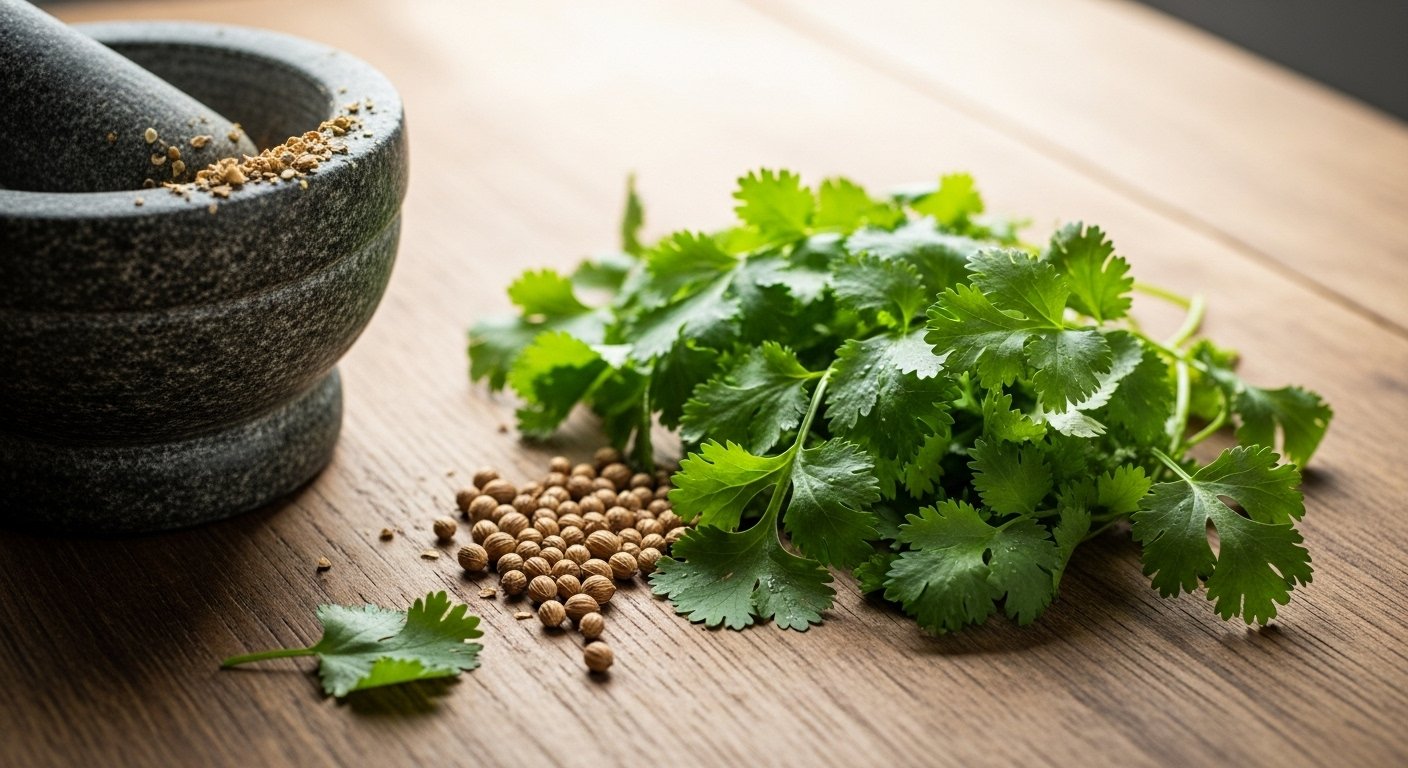Koriandri, a humble yet powerful herb, has traveled through centuries and continents, enriching dishes and traditional medicine alike. Known for its unique aroma and refreshing flavor, koriandri is more than just a seasoning—it’s a treasure trove of nutrients, culture, and healing potential. From ancient civilizations to modern kitchens, koriandri continues to captivate both chefs and health enthusiasts.
The Origins and History of Koriandri
The story of koriandri begins thousands of years ago. Historical records suggest that the herb was cultivated in regions of the Mediterranean and later spread to Asia and Europe through trade routes. Ancient Egyptians used koriandri in their culinary practices and as part of their medicinal mixtures. The herb even appeared in Sanskrit writings and biblical references, symbolizing its long-standing presence in human civilization.
Over time, koriandri adapted to various climates, finding a home in India, the Middle East, and Latin America. Its versatility and accessibility made it an essential part of global cuisine. Today, koriandri remains a universal herb used by both traditional healers and gourmet chefs.
Understanding Koriandri: The Plant Itself
Koriandri comes from a plant scientifically known as Coriandrum sativum. It belongs to the Apiaceae family, which also includes parsley, celery, and dill. The plant produces delicate, feather-like leaves and small round seeds, both of which are edible and aromatic.
While the fresh leaves are often used for garnishing or flavoring, the seeds are commonly dried and ground into spice powder. Interestingly, the taste of koriandri leaves and seeds differs significantly—the leaves have a citrusy freshness, while the seeds offer a nutty, warm, and slightly sweet flavor.
Nutritional Value of Koriandri
Koriandri is not just about taste; it’s packed with nutrients that support overall health. It contains vitamins A, C, and K, along with essential minerals like potassium, calcium, and iron. Additionally, koriandri is a good source of dietary fiber and antioxidants, which contribute to its numerous health benefits.
Key Nutrients Found in Koriandri:
- Vitamin A: Supports vision and immune health.
- Vitamin C: Boosts immunity and collagen production.
- Vitamin K: Promotes healthy blood clotting and bone strength.
- Calcium: Strengthens bones and teeth.
- Iron: Supports oxygen transport and energy metabolism.
With such a nutrient-dense profile, incorporating koriandri into meals can enhance both flavor and nutrition.
Health Benefits of Koriandri
Throughout centuries, koriandri has been revered for its medicinal qualities. Traditional healers and modern scientists alike recognize its potential in supporting various aspects of health. Here are some of the top benefits associated with koriandri:
A. Improves Digestion
Koriandri aids in digestion by stimulating digestive enzymes and juices. It helps reduce bloating, gas, and indigestion. Consuming koriandri tea or adding it to meals can soothe the digestive tract and promote a healthy gut.
B. Detoxifies the Body
Rich in antioxidants, koriandri assists in flushing out toxins from the body. It supports liver function and may help in the removal of heavy metals and harmful compounds from the bloodstream.
C. Supports Heart Health
Koriandri has been shown to help regulate blood pressure and cholesterol levels. Its anti-inflammatory properties support healthy circulation and reduce the risk of cardiovascular diseases.
D. Controls Blood Sugar Levels
Studies suggest that koriandri may help manage blood sugar by improving insulin sensitivity. This makes it beneficial for individuals with diabetes or those at risk.
E. Enhances Skin Health
Thanks to its antibacterial and anti-inflammatory qualities, koriandri can improve skin texture and clarity. It’s often used in natural face masks or tonics to reduce acne and blemishes.
F. Strengthens Immunity
With its high vitamin C content and immune-boosting compounds, koriandri helps the body fight infections and build resistance against seasonal illnesses.
Culinary Uses of Koriandri
Koriandri’s distinctive flavor makes it a staple in kitchens worldwide. Whether used fresh or dried, its versatility allows it to enhance a wide range of dishes.
Fresh Koriandri Leaves
- Garnishing: Fresh leaves are used to top curries, soups, and salads.
- Chutneys & Sauces: In Indian cuisine, koriandri chutney is a beloved condiment.
- Salads & Wraps: Adds a refreshing aroma and taste.
Koriandri Seeds
- Spices: Ground koriandri seeds form a key ingredient in curry powders, garam masala, and spice rubs.
- Baking: Adds depth to bread and pickles.
- Stews & Marinades: Offers a warm, citrus-like flavor to slow-cooked dishes.
From Latin American salsas to Middle Eastern stews, koriandri bridges culinary traditions with a universal appeal.
Koriandri in Traditional Medicine
For centuries, koriandri has been an integral part of Ayurveda, Traditional Chinese Medicine (TCM), and other herbal systems. Its holistic benefits make it valuable for treating various ailments naturally.
In Ayurveda:
Koriandri is classified as a cooling herb, helping balance excess heat in the body. It’s often used to treat digestive issues, urinary disorders, and inflammation.
In Traditional Chinese Medicine:
Practitioners use koriandri to stimulate appetite, alleviate colds, and relieve pain associated with arthritis.
The herb’s healing power is attributed to its bioactive compounds, such as linalool and borneol, which exhibit anti-inflammatory, antimicrobial, and antioxidant properties.
Growing Koriandri at Home
Growing koriandri is simple and rewarding. Whether you have a garden or just a sunny windowsill, you can cultivate this herb with minimal effort.
Steps to Grow Koriandri:
- Soil Preparation: Use well-draining, fertile soil.
- Sowing Seeds: Plant seeds ¼ inch deep and keep the soil moist.
- Sunlight: Koriandri thrives in full sunlight.
- Watering: Keep the soil slightly moist but avoid overwatering.
- Harvesting: Leaves can be harvested once the plant reaches 4–6 inches in height.
Growing your own koriandri ensures a fresh and organic supply while adding greenery to your home.
Koriandri in Culture and Symbolism
Beyond its culinary and medicinal roles, koriandri carries symbolic meanings across cultures. In ancient Greece, it represented love and passion. In some Asian traditions, it symbolizes health and vitality. Festivals and rituals often feature koriandri as a symbol of prosperity and protection.
Its global presence in both sacred and everyday life reflects humanity’s deep appreciation for nature’s gifts.
Modern Research and Studies
Modern science continues to explore the potential of koriandri. Studies indicate that its essential oils possess antimicrobial properties effective against various pathogens. Research also highlights its role in lowering anxiety and improving sleep, thanks to its natural sedative effects.
Ongoing investigations aim to uncover more about koriandri’s bioactive compounds and their therapeutic potential in managing chronic diseases.
How to Store and Preserve Koriandri
Proper storage helps retain the flavor and freshness of koriandri.
For Fresh Leaves:
- Store in a refrigerator wrapped in a damp paper towel.
- Alternatively, freeze chopped leaves in ice cube trays with olive oil for longer shelf life.
For Seeds or Powder:
- Keep in airtight containers away from direct sunlight.
- Ground koriandri should be used within a few months for optimal flavor.
By following these tips, you can enjoy koriandri’s freshness all year round.
Precautions and Considerations
While koriandri is generally safe for most people, a few precautions should be noted:
- Allergies: Some individuals may be sensitive to koriandri’s essential oils.
- Pregnancy: Pregnant women should consult a doctor before consuming it in medicinal amounts.
- Medication Interactions: Koriandri may influence blood sugar and blood pressure levels; consult a healthcare provider if you’re on related medication.
Used wisely, koriandri can be a delightful and healthful addition to daily life.
The Future of Koriandri
As the world moves toward natural wellness and sustainability, koriandri stands out as a symbol of eco-friendly living. Its adaptability and wide range of benefits make it a key herb in the future of herbal medicine, organic farming, and global cuisine.
From its ancient roots to modern kitchens and laboratories, koriandri continues to inspire innovation while connecting people to the earth’s healing power.
Conclusion
Koriandri is far more than a seasoning—it’s a story of flavor, health, and heritage. Whether sprinkled over your favorite dish, brewed into a soothing tea, or cultivated in your garden, koriandri embodies nature’s generosity in every leaf and seed. Embracing koriandri means embracing a tradition that nourishes the body, delights the senses, and connects us to a timeless legacy of natural wellness.

